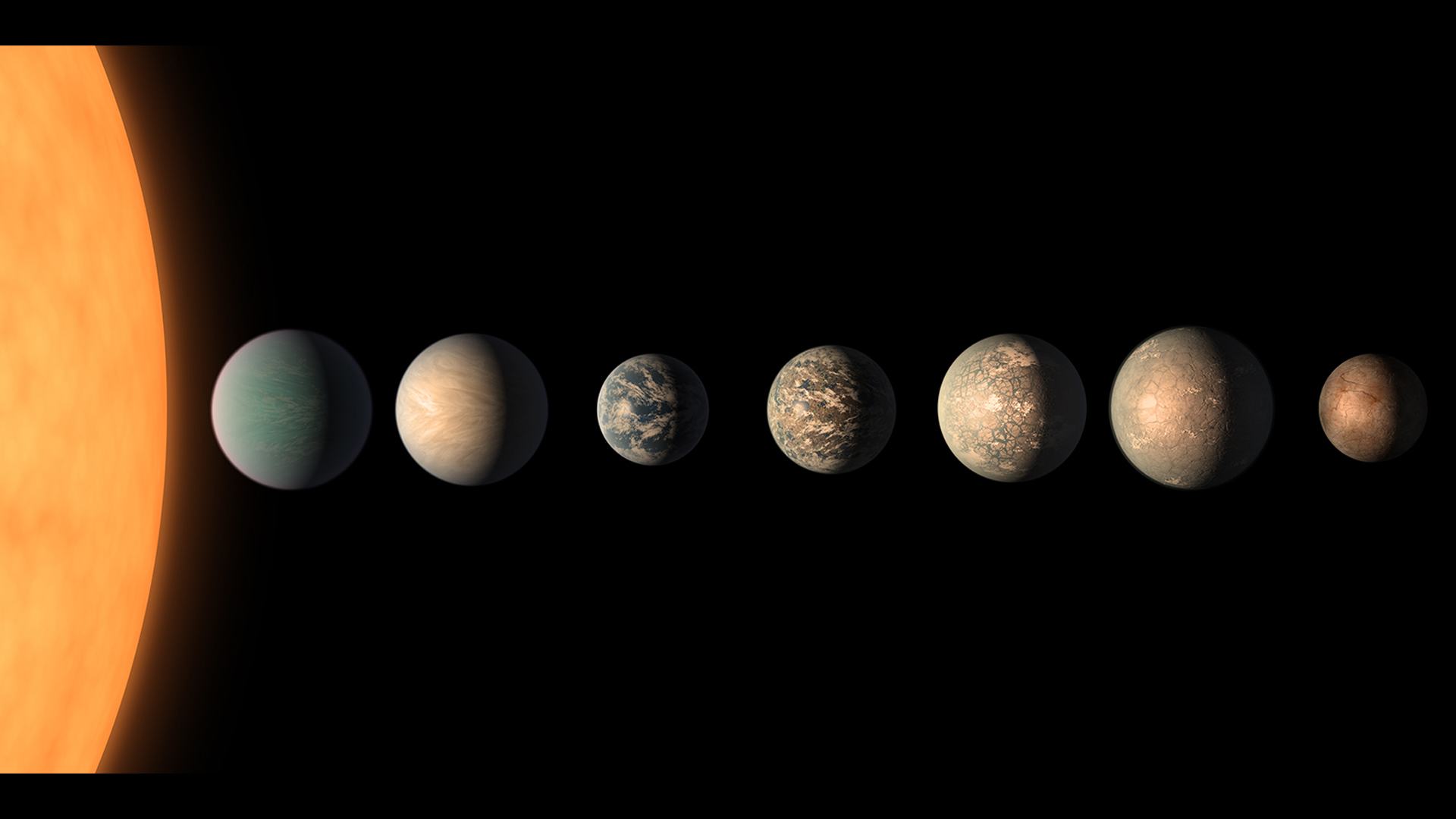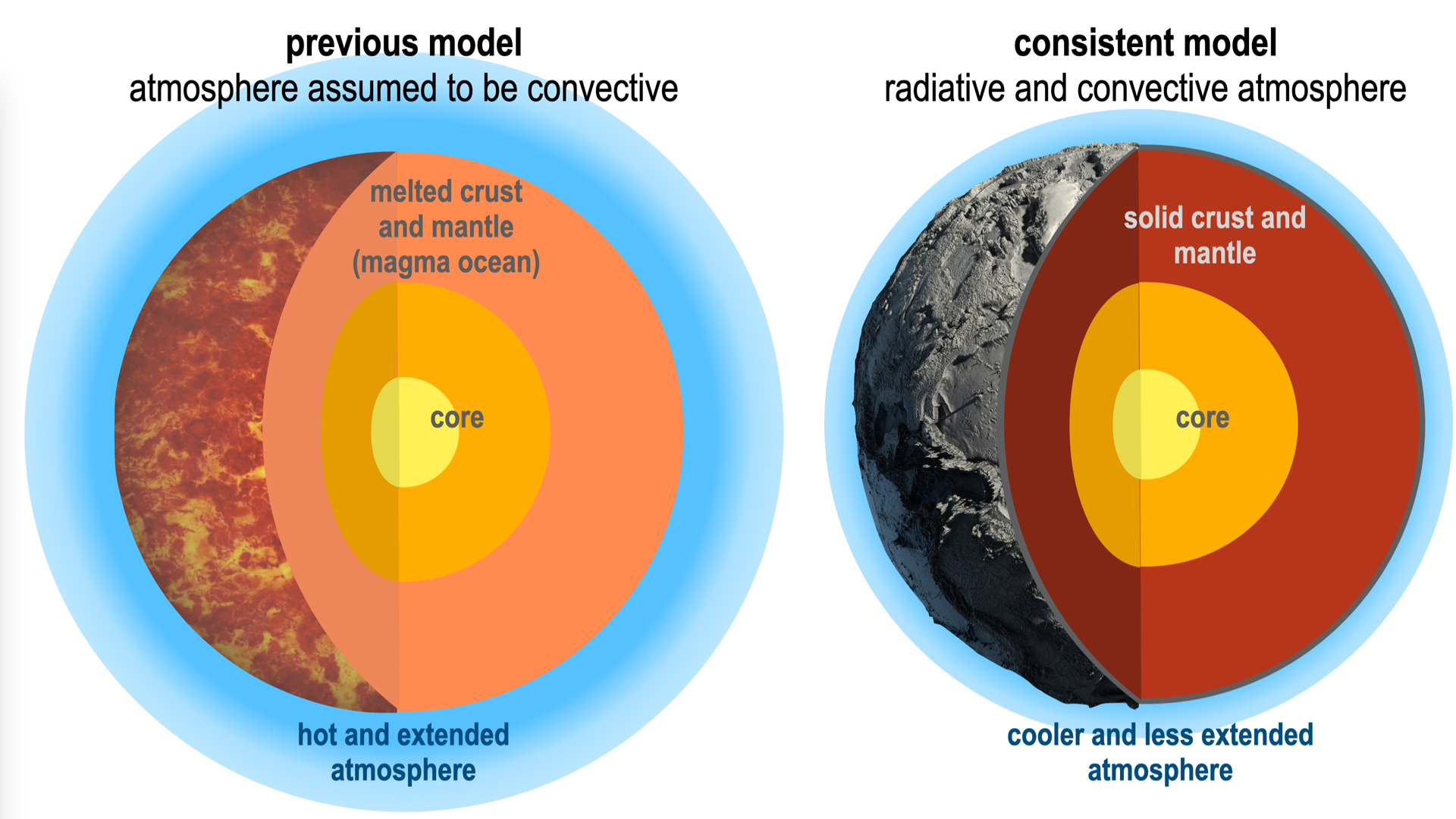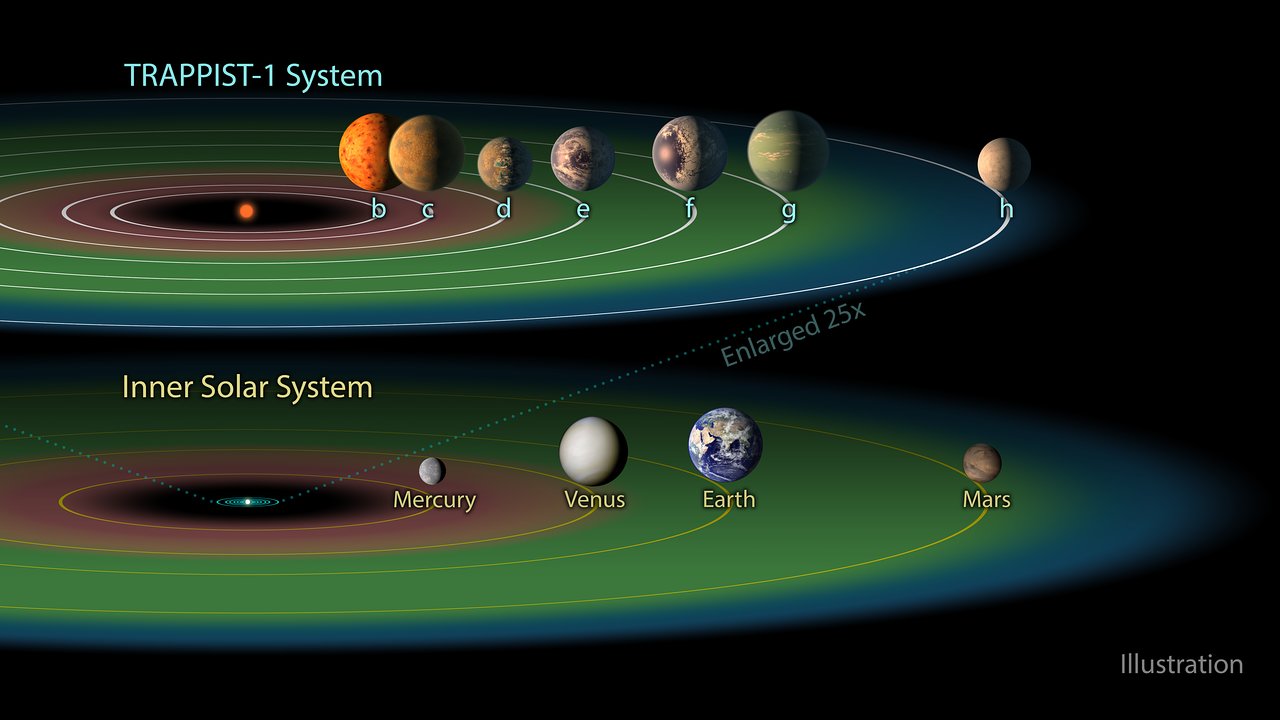Exoplanets in the Trappist-1 system more likely to be habitable than scientists once thought, study suggests
A new computer model simulating the evolution of planetary atmospheres found that water may have survived on some planets of the fascinating planetary system.

For years, scientists have been debating the odds of life existing on seven fascinating planets orbiting the Trappist-1 star, the most famous planetary system outside our own. The reason? Although several of these planets orbit in their star's habitable zone, the region around a stellar body where liquid water can exist because temperatures are just right, these worlds weren't always so comfortable.
In the past, Trappist-1 exoplanets were subject to much harsher conditions because their parent star used to be much hotter. During those hundreds of millions of scorching years, any water which may have been trapped in the rocks of these planets would have evaporated and dissipated into space, scientists previously thought. That would, of course, ruin the chance of the Trappist-1 planets to develop life as we know it.
But a new study, based on a novel modeling technique of the evolution of planetary atmospheres, suggests all may not be lost for life on Trappist-1 exoplanets.
Related: James Webb Space Telescope finds no atmosphere on Earth-like TRAPPIST-1 exoplanet
Franck Selsis, an astronomer at the University of Bordeaux, France, and his colleagues didn't set out to prove the enticing system of Earth-like exoplanets orbiting a small, cool star only 40 light-years from Earth could host life. Rather, they were frustrated by the crude nature of existing models of water-rich planetary atmospheres. They wanted to create something more realistic — something that would take into account actual atmospheric conditions on those planets and not just a set of theoretical assumptions.
Developing enormous water-rich atmospheres is a crucial step in the evolution of ocean-bearing worlds. Thus, understanding these atmospheres better might help scientists more accurately constrain where life in the universe might exist. According to current theories, when planets form, their water is contained in their rocks. But due to powerful volcanism in these budding planets' early years, this water evaporates into the atmosphere. When conditions are right, that water vapor has the opportunity to condense and form a liquid ocean in which life might emerge. But when exactly conditions are right remains a question.
"In the past, when we were modeling these atmospheres, we were making a very strong approximation, which was saying that these atmospheres are convective. That means that the stellar radiation is deposited very deep near the planet's surface, and the way the energy goes up and out is through convective motion," Selsis told Space.com
Get the Space.com Newsletter
Breaking space news, the latest updates on rocket launches, skywatching events and more!
"The hot air goes up, the cold air goes down and we assume that this is the main way for the energy to be transported out of the atmosphere and then radiated out [into space]," he continued. "This makes our life much simpler because when convection is the main driving force in an atmosphere, we know the gradient of the temperature, we know how temperature varies with pressure. It just has to do with the kind of gas you add into the atmosphere."
But things are not so straightforward on real planets.

The opacity of the gas shrouding a planet changes with altitude, affecting how much heat gets trapped inside and how much escapes into outer space, Selsis explained. For a long time, scientists couldn't model either of these variables. Those opacity changes, and their effects on other processes in the atmosphere, remained a mystery. This led Selsis and his colleagues to suspect the results of earlier simulations, which didn't include such information, might be wrong.
"We were not completely happy with the convective assumption," Selsis said. "One reason for that is that with very deep atmospheres, there will be little light reaching the surface. Probably not enough to drive convection."
That's where the Trappist-1 system comes in. Previous models have shown that planets with water-rich atmospheres that receive only about 10% more sunlight than Earth quickly develop a vicious greenhouse effect, the process of trapping heat facilitated by certain gases, which is infamously driving climate change on Earth. Because water vapor is a potent greenhouse gas, as water continues to evaporate from a planet's rocks and the concentration of water vapor in the atmosphere rises, so too rises the temperature on the planet' surface. Eventually, the planet becomes so hot that its crust and mantle melt into an ocean of magma, releasing any remaining water trapped in the rock into the atmosphere.

Gradually, over billions of years, as powerful stellar winds lash the planet, this atmospheric water dissipates into space. Earth's hotter sibling Venus, which orbits 25 million miles (40 million kilometers) closer to the sun than Earth does, was thought to have met such a fate. So too were the planets in the habitable zone of Trappist-1. Although the Trappist-1 star is smaller and cooler than the star at the center of our solar system, all seven of its planets orbit at distances much shorter than the distance between the sun and Mercury, the solar system's innermost planet.
"Small, red stars like Trappist-1 decrease in luminosity with time," said Selsis. "When the Trappist-1 system formed, the planets that are now inside the habitable zone, where water can exist, were for hundreds of millions of years much more irradiated than they are today and that means that if they had water, this water would have evaporated."
The new model developed by Selsis, however, shows that although conditions on all these planets were undoubtedly hellish during their earlier years, they may not have been hot enough to melt the planets' crust and mantle into magma. That means quite a lot of water may have survived within the rock, into the later years when the parent star cooled off. Hence, oceans of liquid water could have formed on these planets, which today may harbor thriving life.
Down the line, these findings may have huge implications for our chances of finding life outside our solar system as small cool stars like Trappist-1, called red dwarfs, are by far the most common type of star in our Milky Way galaxy.
Eventually, the researchers also say the results will help scientists better interpret findings from the James Webb Space Telescope, which, in addition to its explorations of the early universe, is searching for traces of water on exoplanets in the Milky Way.
The study was published on Wednesday (Aug. 9) in the journal Nature.
Join our Space Forums to keep talking space on the latest missions, night sky and more! And if you have a news tip, correction or comment, let us know at: community@space.com.

Tereza is a London-based science and technology journalist, aspiring fiction writer and amateur gymnast. Originally from Prague, the Czech Republic, she spent the first seven years of her career working as a reporter, script-writer and presenter for various TV programmes of the Czech Public Service Television. She later took a career break to pursue further education and added a Master's in Science from the International Space University, France, to her Bachelor's in Journalism and Master's in Cultural Anthropology from Prague's Charles University. She worked as a reporter at the Engineering and Technology magazine, freelanced for a range of publications including Live Science, Space.com, Professional Engineering, Via Satellite and Space News and served as a maternity cover science editor at the European Space Agency.
-
rod Models will need to be validated using real world measurements of TRAPPIST-1, 7 exoplanet system. Here is another report based upon observations of class M and K stars indicating destructive magnetic field activities.Reply
The powerful winds of super magnetic stars could destroy the possibility for life on their exoplanets, https://forums.space.com/threads/the-powerful-winds-of-super-magnetic-stars-could-destroy-the-possibility-for-life-on-their-exoplanets.62615/ -
Helio The article mentions that red dwarfs are hotter in their early years. This isn't true of G-class stars, like the Sun. So is this true for all highly convective stars?Reply -
vagor Couple considerations that may have been missing here:Reply
- How old is Trappist-1 system? Being Red dwarf, it may have formed during the early epoch of the universe. In this case its metallicity may be too low to form all elements needed for life. However, it does have planetary system suggesting that there are some metals available.
- If Trappist age is many billions of years, then water may have recycled during its lifetime. Initially during hot period it may have been blown away by solar winds, but later formed icy comets on the outskirts of the system that later may have been captured by inner planets, including located in Goldilocke zone. -
rod http://exoplanet.eu/catalog/trappist-1_b/, the ages or age of the parent star posted at this exoplanet site. 7.6 Gyr.Reply









